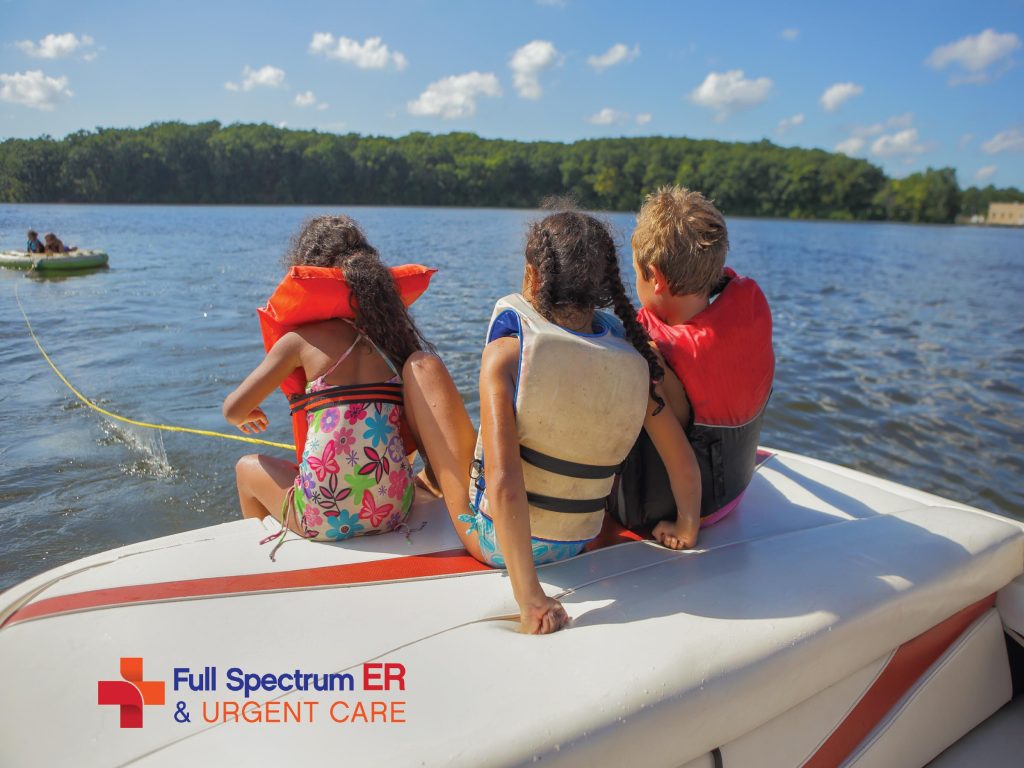
 When the sun’s blazing, there’s nothing better than a refreshing dip.
When the sun’s blazing, there’s nothing better than a refreshing dip.
When and where should you and your children wear a life jacket?
-
For small children, inexperienced, or non-swimmers: Anytime you are near a body of water, including pools and waterparks.
-
Children that are 5 years or younger who are not protected by touch supervision at all times. Touch supervision means being within arm’s reach of children at all times.
-
Anytime you or your loved ones are on or in oceans, lakes, or other bodies of open water.
-
Anytime you or your loved ones are participating in any boating, paddling, or water-based sports, regardless of swimming ability.
-
Anytime you or your loved ones are around cold bodies of water or ice.
What is the best way to use a life jacket?
-
Life jackets come in all shapes and sizes. Make sure you are using the right type for the activity you are doing. Different types of Life Jackets:
-
Type I – Inherently buoyant recommended for cruising, racing, fishing offshore, when boating alone or in stormy conditions.
-
Type II – Inherently buoyant recommended for inland day cruising near the shore, fishing, and sailing. Also good for boating in light craft.
-
Type III – Inherently buoyant, recommended for sailing, water skiing, fishing, canoeing, kayaking, dinghy races, and for personal watercraft operation.
-
Type III – Inflatable, recommended use for sailing, dinghy races, and canoeing.
-
Type IV – Throwable design, designated to be thrown to an overboard victim or to supplement the buoyancy of a person that has gone overboard. The Type IV throwable device can come in square form, a ring buoy, or horseshoe buoy mounted on a deck.
-
Type V – Special use life jackets: Restricted to the special use for which each is designed, for example: sailboard harness, deck suit, paddling vest, commercial white water vest or float coats.
-
Type V – Automatic inflation models: Restricted to the one use for which it is designed, ex. belt pack, deck suit, float coat.
-
Type V – Hybrid Inflation and some special notes: Models recommended for boating activities where rescue is nearby and must be worn when underway.
-
-
Always make sure the life jacket that you are using is U.S. Coast Guard-approved. (Look for the stamp on the life-jacket) Life jackets will have a U.S. Coast Guard Approval Number.
-
Always make sure the life jacket fits the intended user by checking the weight and size limits.
-
Always make sure the buckles and straps are functioning properly. Discard any life jacket with any torn fabric or loose straps.
-
Lastly, practice swimming with one one before use!
-
Take a Free Online Course with American Red Cross! Water Safety for Parents and Caregivers Online Course

